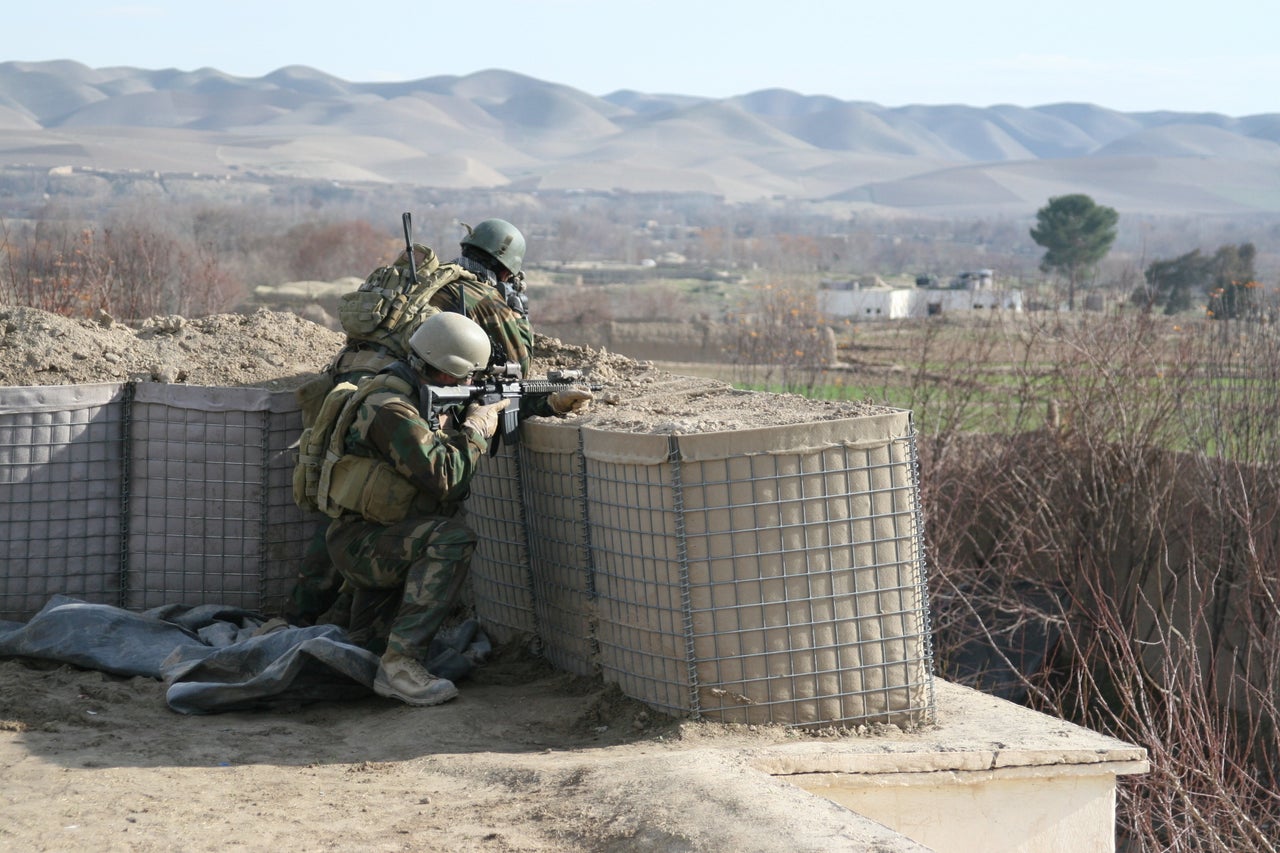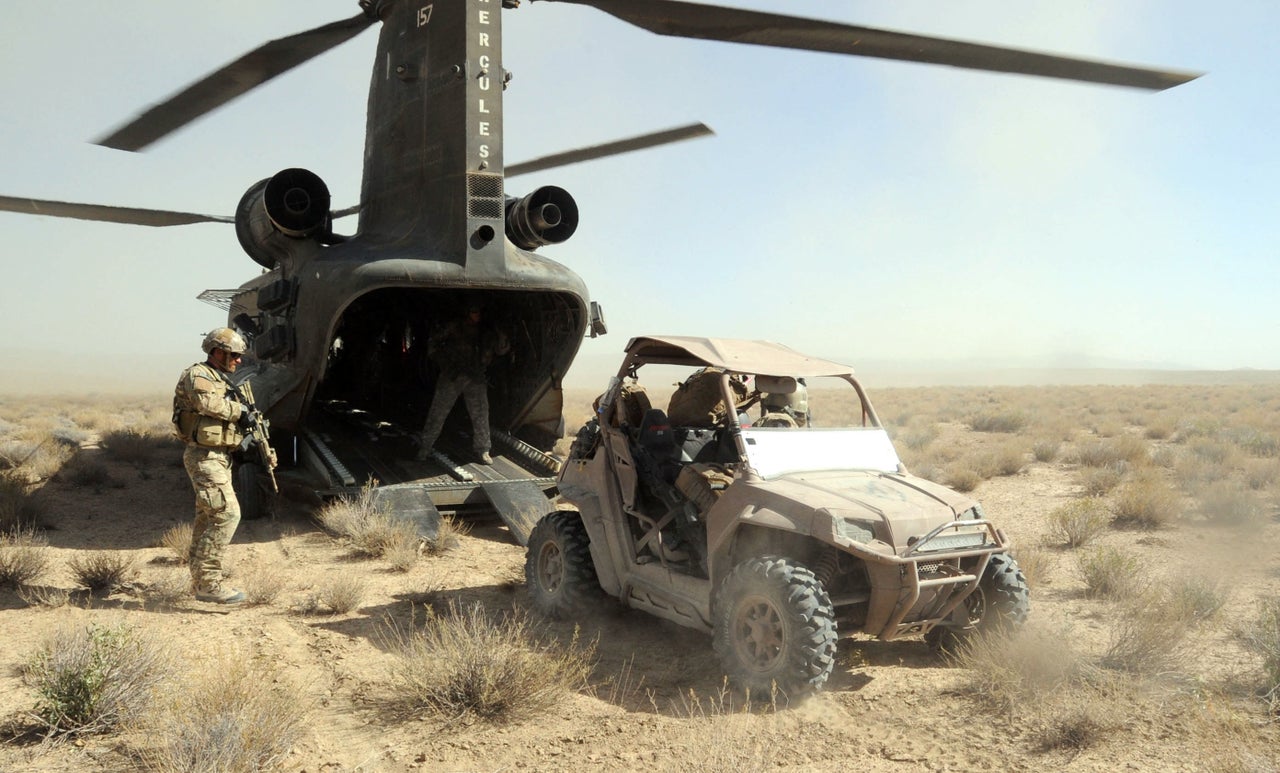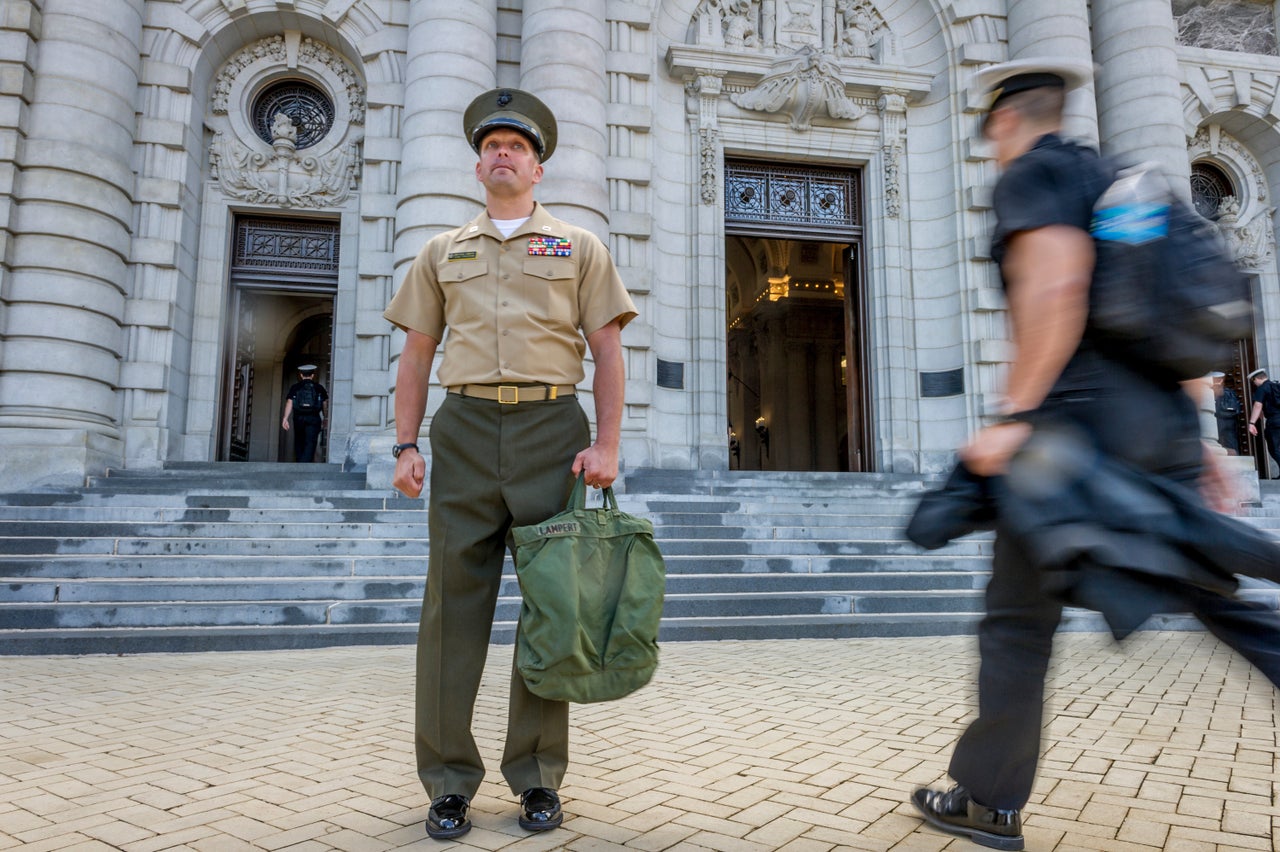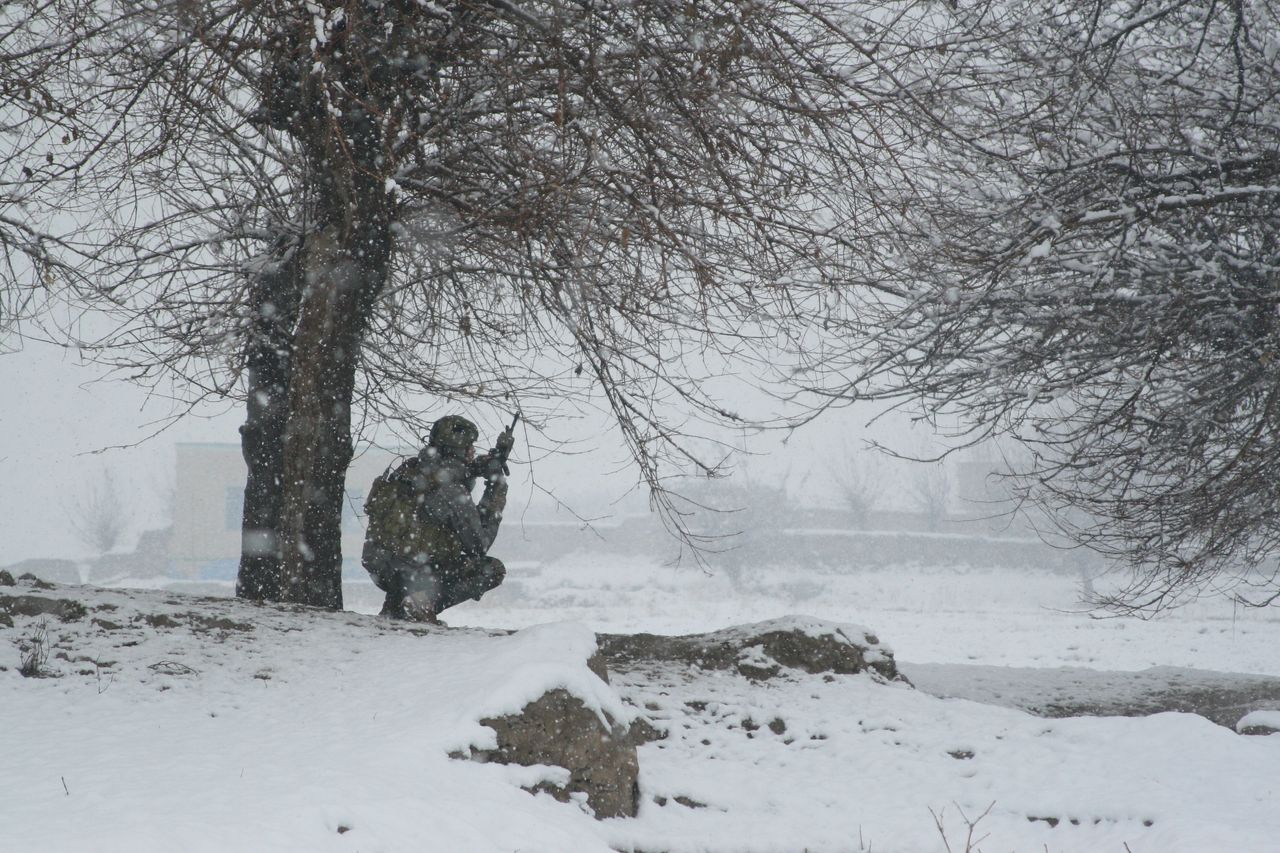NAVAL SPECIAL WARFARE COMMAND, Coronado, Calif. -- With no fanfare, U.S. special operations commandos head out on long, dangerous and secretive missions to snatch or kill militants or to advise allies in combat. They shoot it out with ISIS extremists in Syria or spend months tracking al-Shabab in Somalia.
And then they come home from months at war -- sometimes with blood still on their boots, one officer said -- and quietly slide into bed beside their wives, exhausted and grim-faced. They say nothing and begin preparing for the next mission.
But after 15 years of war and no end in sight, even the toughest men -- they’re almost all men -- can falter.
“Our people need help with mending their mind, body and spirit,” Army Lt. Gen. Tony Thomas wrote to Congress last month, shortly before he was confirmed to lead the U.S. Special Operations Command, which oversees all U.S. special operations forces.
It was a rare public acknowledgement of the pressures these “operators,” in military parlance, are under. But it was not the military’s first recognition of the problem.
For several years, SOCOM has been taking extraordinary steps to restore and strengthen its operators’ battered physical and mental condition.
They are wrestling with questions as old as warfare itself: How can the human body be developed to absorb the repeated physical punishment of combat and still perform far above the ordinary? How can even elite warriors endure the cumulative effects on mind and spirit of extreme stress and continual exposure to death and destruction? How can the damage to their wives and kids be prevented or healed?
The answers will help determine how the United States fares in the long war against Islamic State militants and other extremists.
In recent conversations, most operators, spouses and support staff -- at the Naval Special Warfare Command in Coronado, California; the 1st Marine Raider Battalion compound in Camp Pendleton, California; the Army’s 10th Special Forces Group at Fort Carson, Colorado; and Air Force special operations units -- asked not to be identified by name and declined to be photographed. But they spoke openly about the pain and costs of their lives.
“Our first three years [of marriage] he was gone 30 months,” one woman said of her husband, a special operations officer. She recalled fondly that she’d fallen for him because of his laugh. But one day she realized he hadn’t laughed for years. Their life, she said, “was all about the mission. Our 3-year-old cried herself to sleep every night for four months, crying that ‘my daddy doesn’t love me, my daddy can’t find me!’”
Once, home after a long and difficult combat deployment and in the middle of an argument with her, she said, “he jumped out of the car and ran across four lanes of highway and jumped a fence and took off.” Shocked, she sat there wondering, ‘Where do I find him? What do I tell the children? How do I go on?’
In another conversation, a 29-year-old pilot wept when describing recent missions in which noncombatants were caught “in the wrong place at the wrong time.” “We were trying to do the right thing,” he said, “but the situations are so complex and dynamic that we cannot -- everything is … not good.” He’s been in treatment for depression, he said, for seven months.
But the mission doesn’t stop while men heal. Even at a steady pace of deployment, there aren’t enough operators to meet demand. Two operators in their 50s are still being sent downrange. And the pace of deployments is accelerating, with new battlegrounds in Syria and Libya.
A few years ago, alarms went off. As Adm. William McRaven took command of SOCOM back in 2011, a fat report landed on his desk. A legendarily tough Navy SEAL commander, McRaven had led the team that captured Saddam Hussein and later supervised the effort to track down and kill Osama bin Laden. But this report left him deeply troubled.
It was a global survey of the 69,000 special operators and support staff, plus their families, detailing the wear and tear of what was then a decade at war. The report was anecdotal but substantial: widespread instances of divorce, domestic violence, drunk driving, depression and sleep problems; outbreaks of angry violence; chronic physical ailments and pain. Suicides rocked the community. And funerals seemed constant: Since 2001, 471 special operators have been killed in action and 3,745 have been wounded, many left struggling with traumatic brain injury.
“The salient point was that the force was frayed, but I recognized that the study had started 18 months earlier,” McRaven, now chancellor of the University of Texas system, told me. Almost certainly the situation had gotten worse, he thought. “We were asking guys to go back into hard combat much more frequently. The report had recommendations, and I turned to my staff and said we’re gonna implement every one of these and as quickly as we can.”

What McRaven launched has become a $39 million campaign called Preservation of the Force and Family. Known by its ungainly acronym, POTFF, the program has inserted psychologists, family counselors, exercise physiologists and other specialists into the daily routines of the special forces community. Their mission is preventive maintenance, catching and resolving problems before they become chronic -- and healing them as quickly as possible when maintenance fails.
“We are the high-speed pit crew,” said a Marine counselor. “We don’t wait until you’re broken and taken out of the game.”
But it’s not easy to convince these men, who depend on their ability to stare down fear and suck up pain, to come home and sit down with a family counselor or mental health specialist.
There’s a stigma attached to admitting weakness and acknowledging you need help, said Terri Ann Naughton, a licensed clinical social worker on the behavioral health team at the Army’s 10th Special Forces Group. SOCOM surveys indicate, for instance, that about 14 percent of special operators have high or moderate post-traumatic stress. But Naughton said, “I don’t think we see even that percentage until they are off or moving off the team. They get by with intestinal fortitude, keeping it together until it’s time they can’t.”
“We’re pretty good at hiding things,” admitted a veteran Green Beret named Jimmy, who was recently shot in the leg and returned to duty almost immediately, “because we want to be on the big mish [mission].”
So reducing the stigma is a key goal of the SOCOM initiative. That’s why chaplains and psychologists are housed together with the troops, so that a guy seeking mental health counseling doesn’t have to make the long “perp walk” up the street past his buddies to the therapist’s office. He can just drop in next door.
The right-here approach is embedded in what SOCOM calls “third location decompression,” an idea practiced sporadically in the past and now institutionalized across the special operations community. A unit returning from a combat tour is diverted somewhere -- Spain, Germany or Hawaii -- for several days of rest and mandatory closed-door one-on-one meetings with a physician, a psychologist and a chaplain. There are briefings on the warning signs of combat stress and traumatic brain injury, and guidance on how to readjust sleep and dietary patterns and ease the reintegration with the family.
Everybody goes, no exceptions.
“In my humble opinion, this was the program that by far was able to address the ugly elephant in the room, called stigma,” Navy Cmdr. Eric Potterat, chief clinical psychologist for all Navy SEALs, told me.

Military personnel outside the special operations community have access to physical and mental health resources, too. But what special operators and their families get is close and intense.
The SOCOM psychologists, licensed clinical social workers, exercise physiologists, nutritionists, family counselors, human performance specialists and chaplains are carefully selected and interviewed by the receiving units before they’re hired. Once in place, they work alongside the operators at the gym, in training, in staff meetings.
The program is geared to what special operators really care about: performance. Every unit has a master nutritionist, for instance, who monitors the operators’ intake and modifies it for different missions. Psychologists use biofeedback and emWave technology to adjust sleep and exercise patterns and improve mental focus.
At one training facility recently, a sports physiologist was teaming up with a strength conditioning coach to work with an operator who had a minor shoulder injury, a nutritionist was conferring with a soldier who felt he was underperforming, and a mental performance specialist was working with other operators to build concentration.
In the midst of weightlifting, a trainer noticed that one operator seemed distracted, not his usual upbeat self. Almost immediately, he was sitting with a behavioral health specialist whose office is a two-minute walk away. She learned there had been a suicide in his family; he met with the chaplain and stayed in counseling through that crisis.
Much of the work that physical and mental specialists do aims at helping operators make the transition from the peak performance and total focus of missions to the needed relaxation at home, said Joan Cook, a psychologist with the Air Force Special Operations Command at Hurlburt Field, Florida.
“I see a lot of fatigue and burnout and sleep problems and irritability, numbness -- I can see it in them after they’re in the unit a year or so,” Cook said. The hyper-vigilance necessary for missions literally hinders post-deployment relaxation because of the stress hormones, primarily adrenaline and cortisol, coursing through the body. Cook urges the men to exercise, which burns off stress hormones, and to breathe. “People think breathing is ridiculous, but when you’re oxygenating, it shuts down the cortisol pump,” she said.
Other techniques are also critical to stress reduction.
“When we look under the hood for the attributes that make someone more stress tolerant, they’re using the same techniques that athletes use to control the stress response,” said Potterat. “So we teach it -- visualization. Positive self-talk. Arousal control, goal setting, compartmentalization, diaphragmatic breathing.”
The on-site care applies as well to those recovering from physical injuries. When regular troops are wounded, they are often excused from normal duty until they recover. But inside special operations forces, anyone injured is kept within the unit and immediately enveloped by specialists who offer individualized physical therapy, strength conditioning and diet. Using that approach, the 2nd Marine Raider Battalion saved 7,280 man hours over three years, compared to a non-special operations battalion that lacked embedded staff and had to sideline injured Marines.

After four years, the campaign that McRaven began seems to be having a positive effect across the special operations community. The emphasis on performance and the use of embedded specialists has reduced the stigma of asking for help, said Navy Capt. John Doolittle, director of the Preservation of the Force and Family program. Since 2011, the number of special operators in regular mental health treatment has risen 77 percent. The special operations community “is obviously growing to trust these resources and providers a little more with every passing month,” Doolittle said.
Or to put it more bluntly, “Guys don’t [sneak] out the back door of my office anymore,” said one therapist.
The suicide rate has also dropped markedly. Retention rates are in the 80th and 90th percentiles.
But the reality remains that for operators and their families, the burden of wartime deployments continues without end.
“We were all still pretty shell-shocked that it [the war] was just going on and on, and everyone had their lives on hold -- and then there was this mass dawning on everyone that this wasn’t going to end and we need to come together and move on,” said the former wife of a Navy SEAL. It was already too late for her marriage. She and her husband were divorced after he was assigned to nine back-to-back combat deployments.
Holding marriages and families together is a key goal of the program McRaven set in motion -- again, for practical reasons: A healthy family at home enables special operators to focus on the mission.
Living this life is not easy, and modern communications that link right to the war zone can make things worse. Families can hook up on Skype. “Which is great,” a spouse said, “until suddenly there’s an attack going down and the kids are hearing, ‘FIRE FOR EFFECT, FIRE FOR EFFECT!!” And the lights dim and shit’s falling everywhere and your kids are crying, like … it’s not so great then.”
She eventually concluded that dealing with stress is not something you can do by yourself. She cautiously attended group therapy and then began working one on one with a psychologist. “I learned that there’s a whole set of tools to deal with this stuff,” she said. Her children, too, were taught how to use techniques such as thought distortion: Instead of thinking “Daddy’s position is going to be overrun,” they can say to themselves, “No, my daddy’s well trained and prepared.” Eventually her husband joined in.
Besides group and individual counseling, there are retreats, seminars and summer camp for kids, who are often consumed with worry about their dads. In the children’s programs, said a special forces psychologist, “they learn to recognize that they’re not alone, that there’s other people in the community with similar experiences, and that without you, this wouldn’t be possible.”
And they reminded that “their service members are heroes,” said an operator’s spouse. “They don’t get that at [public] school. They don’t get that at home -- moms are just trying to get dishes put away, kids bathed, trash taken out. They’re not really lifting their dad up on pedestals -- there’s no time.”
As evidence that the stigma here is also fading -- with some command help -- a senior special operations officer once abruptly left a staff meeting by announcing that it was time for him and his wife to meet with their family counselor. “He wanted to make sure his guys saw him do that,” his wife told me.

Despite the positive reviews, however, much remains undone -- for reasons of pride, tradition, lack of time and the relentless schedule of deployments. “We’re just seeing the tip of the iceberg,” a Marine therapist said.
Matt Lampert, a 29-year-old Marine Raider captain, was leading a detachment in Afghanistan in 2010 when an IED blast in Helmand Province tore off both of his legs. Medevaced home, he pushed through punishing rehab, learning to function with prosthetics. By 2012, back on active duty, he again deployed in combat with his unit in Afghanistan.
It’s a miraculous and well-known story of grit and courage, but there’s much more to it. Not for another two years did Lampert begin to realize that he’d neglected his mental health. That he wasn’t sleeping, that he was short-tempered and irritable. Underperforming.
“I’d been focused on the physical, the skills you need and restructuring your life -- where cars are parked and who picks up the groceries and how do you get around, all this task-oriented stuff,” he told me. The challenges of his physical recovery “masked all this accumulated stress, and for the first couple of years I didn’t notice that weight.”
Checking in with the battalion’s mental health specialists in 2014 “took a little leap of trust. But the barriers were lower because they are part of our team. I’m not getting a tracking number at some huge hospital. These people are in battalion staff meetings sitting across from me every day,” he said.
What they helped him uncover was the anger, guilt and shame left over from that IED blast: He felt that it was his fault for not spotting the hidden bomb, that being medevaced home meant leaving his Marines without their leader. The therapists helped him discover reserves of resilience he hadn’t yet tapped.
“Having those people interacting with me on an almost daily basis, in a working or personal basis -- they’re there when I’m ready even if that’s years later,” Lampert said. “That’s tremendously unique.”
Behind such stories, of course, is the rigorous weeding-out process for special forces applicants. Among other screenings and tests, they undergo psychological profiling, which attempts to identify such personal attributes as tolerance for adversity.
Those who remain have what researchers call a high degree of hardiness: the ability not merely to endure hardship with gritted teeth, but to “adjust and adapt” to changed circumstances, according to Paul T. Bartone, a psychologist who was part of a consultant team that laid the groundwork for the SOCOM program.
A “high-hardy” person, Bartone explained, enjoys challenges, is confident in his problem-solving ability, has a sense of control over his environment and is motivated to learn. While “hardiness is not optimism,’’ Bartone said, high-hardy people “see life as meaningful and worthwhile, even though it is sometimes painful and disappointing.”
But the inevitable setbacks of war -- operations go bad, buddies are wounded or killed, civilians die -- can undermine even the hardiest.
“It’s common for these guys to blame themselves when things don’t go exactly how they expect,” said one chaplain with a Marine special forces battalion. “We have to work really hard with that because it’s related to the moral injuries we see in guys, an excessive sense of personal responsibility for stuff that is not necessarily within their control.”
That they have killed emerges as a subtext to all the mental stress of combat. “Guys will come into my office and close the door and talk for hours about that and what it does to them, and some of them will try to put on the stoic -- you know, it doesn’t affect them that they killed 32 bad guys on that last deployment or whatever,” said Army Col. Wayne Surrett, battalion surgeon to the 10th Special Forces Group.
“That’s fine, but I think it absolutely affects the way they look at the world, whether it jades them, makes them more callous.” Surrett said he could not think of anyone who had expressed regret or remorse over killing to him. “There’s an emotional detachment,” he said.
Lampert, who currently teaches leadership at the U.S. Naval Academy as an active-duty Marine officer, looks at it slightly differently. More than five years after he began grappling with the enormous physical and mental weight of his injuries, life is still a struggle, he said one day recently. Resilience is finite, he said. But that well can be drained.
Standing on his two prosthetic legs and saluting smartly as midshipmen streamed past between classes, he explained, “I put on my game face.”
“Inside? …” he shrugged.
